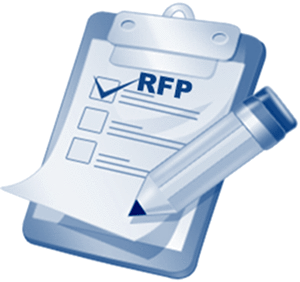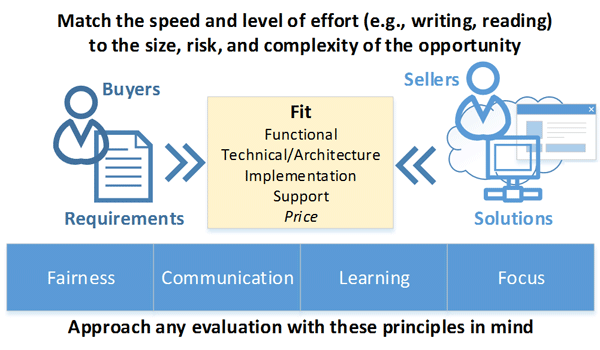 Request for Proposal. RFP. Contact center and IT leaders, along with their procurement departments, turn to this tried and true approach when seeking a fair, competitive analysis of a variety of options. In some circumstances, a formal RFP may still be a good option, if not required. But the evaluation process needs to evolve with a changing market.
Request for Proposal. RFP. Contact center and IT leaders, along with their procurement departments, turn to this tried and true approach when seeking a fair, competitive analysis of a variety of options. In some circumstances, a formal RFP may still be a good option, if not required. But the evaluation process needs to evolve with a changing market.
Any alternative to the RFP may have more direct engagement earlier in the process, including demos and discussions of vendor and solution fit. These interactions create comfort between buyers and sellers as they get to know each other and build trust and understanding. These steps can play an important role in narrowing the options because remember: buyers, you don’t want to assess tons of alternatives, and vendors, you don’t want to bid things buyers don’t want! Those passing the “fit test” will still compete and the evaluation will still compare pros and cons and pricing. An evaluation of this sort may take weeks instead of months, and still deliver a thoughtful, defensible decision.
A great tool for a streamlined approach is a Request for Information and Quote. You may think of an RFI/Q as “RFP light.” Documentation is much shorter, requesting some general information and a few targeted responses. It still gets a price specific to a set of requirements, but uses iteration in follow up questions and answers. The deepest dive occurs through discussions, presentations, and demonstrations rather than long documents. The vendor doesn’t present a generic “dog and pony” marketing presentation. They follow a targeted agenda that focuses on what matters to the buyer and their requirements.
An even lighter version of this process uses a Request for Quote (RFQ), focusing the written request on the key requirements that will define the price (e.g., number of licenses, key capabilities that will define license type), with little else documented. These cases place even more emphasis on the direct communication and trust that is built between buyers and sellers.
You can also shop on the web due to the abundance of online documentation for solutions such as true cloud offerings with standard pricing. You may engage with inside sales people or even view pricing online. What you see is what you get. Discussions and demos still add value but they are simpler in every sense. There is little to configure or negotiate specific to your solution and you may never meet a vendor representative face-to-face in these extremely streamlined situations.
With that wealth of options, here are some factors in matching approach to size and scope of the opportunity:

- Size – Bigger, higher value (or cost) opportunities typically demand more rigor and should be able to get the vendors’ attention. This doesn’t always mean a full RFP but at least warrants an RFI/Q.
- Risk – If requirements dictate very critical functionality regarding compliance, security, fraud, SLAs, etc., more formality is better for all. A seller needs to know what is truly required and a buyer needs to understand how the vendor will deliver. Risks can be mitigated through the written word.
- Complexity – A buyer with complex functional or technical needs, or an implementation that is going to be tricky, needs to err on the side of caution. Complexity can more readily be tackled by removing the “I assumed” element that creeps in if the unique needs of the situation are not addressed in writing until contracts and Statements of Work.
On the flip side, smaller, simpler requirements lend themselves to very streamlined processes. Especially with cloud solutions that are positioned in the market as easy to procure and deploy, the process to shop, bid, and compare should align in simplicity. The more standardized the offerings, pricing, implementation, and support, the less rigor is required.
The one caution flag I will throw is to not let speed be your number one driver! Take time to learn, engage, and compare, as the guidelines define.
